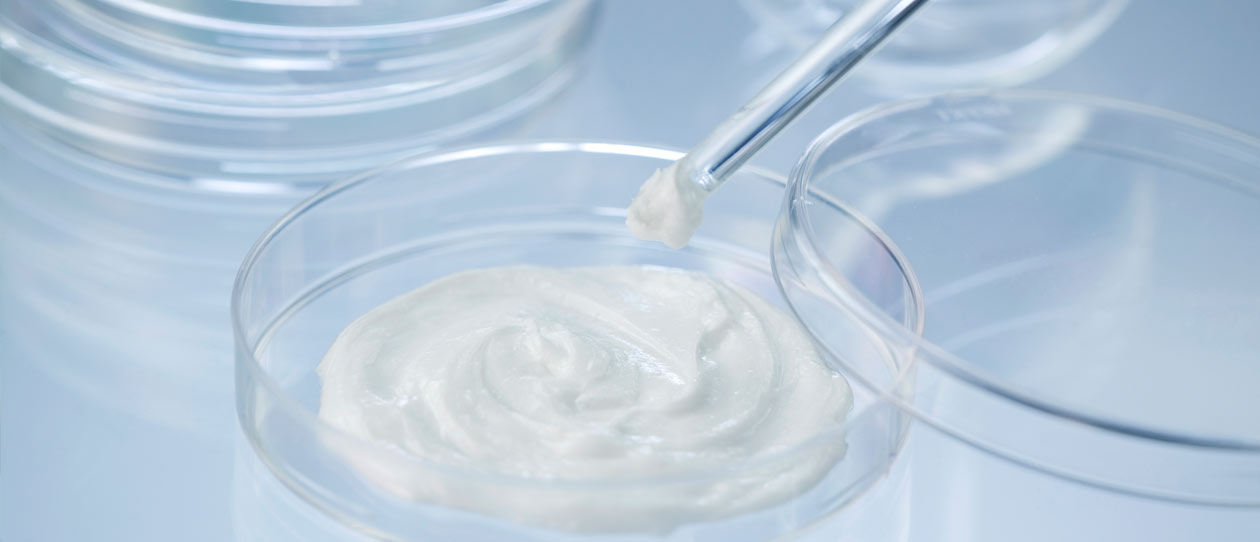Skin Applied Products
A topical drug product is one that is administered to the skin (or another external body surface such as a mucous membrane) to treat a condition of the skin (or other tissue to which the drug product is applied). A well-known example is a corticosteroid cream applied to an area of skin affected by atopic eczema. The formulation is engineered to deliver the corticosteroid drug into the dermal tissue and thereby ameliorate the condition.
Typical formats for topical formulations include ointments, lotions, creams, solutions, gels and foams. Tioga Research scientists and technologists have extensive experience with all these formats.
From a US regulatory perspective, a topical drug product that conforms to a monograph might be suitable for marketing as an OTC product. If, as a generic, it replicates an already-approved topical product it may be suitable for a Section 505(j) or abbreviated new drug application (“ANDA”). A new topical drug product would require approval under Section 505(b)(1) (if it comprises a new chemical entity (“NCE”)) or under Section 505(b)(2) if the systemic safety of the pharmaceutical ingredient (“API”) has been previously established. We have helped clients with products in all these regulatory categories.
Transdermal Drug Products
A transdermal drug product is one that is administered to the skin, but to treat a condition by providing the drug systemically. An example is the estradiol birth control patch. The patch formulation is devised to deliver the hormone drug through the skin; so transdermally, into the blood stream for systemic distribution.
In addition to various forms of transdermal patches, ointment, cream, solution, gel and foam formats are commonly used for transdermal formulations. Tioga Research scientists and technologists have extensive experience with all these formats.
Prestige Cosmetics
Beauty care or cosmetic formulations may comprise some 10-40 ingredients, and may be heterogeneous, with complex microstructures. A ‘cosmeceutical’ is nominally a cosmetic-pharmaceutical hybrid, a cosmetic product that comprises one or more biologically active agents. Studies contributed by Tioga Research scientists have spanned skin penetration measurements, comparative assessments of skin penetration of an active agent, measurements to support particular marketing claims, as well as devising, prototyping and validating new high throughput experimentation platforms for screening cosmetic formulations.
Personal Care Products
Personal care products include those for exterior personal cleanliness and hygiene. As with cosmetic products, Tioga Research staff have contributed to measurements of properties determining of product performance, under a range of usage-relevant application scenarios.
Medical Devices
Examples of skin-applied medical devices include wound care dressings embodying an active agent, microneedle or microfluidic devices designed to provide a drug formulation into or to the skin, or gel electrodes for health monitoring.
In the US, medical devices can be approved through a premarket approval (“PMA”) process or through a premarket notification (under Section 510(k)). In medical device programs, Tioga Research scientists and engineers have devised formulations that evidence targeted characteristics, such as API delivery, when provided as, incorporated into, or administered through the medical device and to the design and testing of active dressings.




